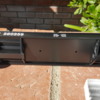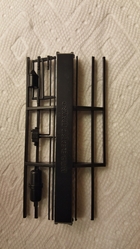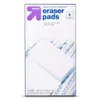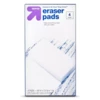Why would anyone want to breath all these fumes in? I purchased a track cleaner block from a dealer at York... best tool ever!
J Daddy posted:
This type of tool including Brite Boys are abrasive. They are meant for those with solid rail track, brass or nickel silver. These will sand the tin plating away on Gargraves or any tubular track in short order.
Pete
True - but it would be YEARS later. I have been using this block for 12 years on Ross and Gargrave track and the plating is still fine.
Gargrave switches tend to have a thinner plating on them... and after 2 years of service I upgraded to Ross.
gunrunnerjohn posted:CurtisH posted:The vapors of the acetone are NOT high enough to cause a BURST of flame as people think. You have a better chance of flame with KEROSENE!Sorry, I don't know where you get your information, but that's not true!
The most hazardous property of acetone is its extreme flammability. At temperatures greater than acetone's flash point of −20 °C (−4 °F), air mixtures of between 2.5% and 12.8% acetone, by volume, may explode or cause a flash fire.
The flash point of kerosene is between 37 and 65 °C (100 and 150 °F), and its auto-ignition temperature is 220 °C (428 °F).
I don't see anything in that data to suggest kerosene is more likely to ignite! One spark and you have fire with the acetone.
I was referring to the amount of Acetone vs the amount of Kerosene. There is very little acetone dispensed when the car is used correctly. It takes no where near as much of the acetone to clean the track. You are correct that it is more flammable I am not arguing that fact. Again quantities mean a lot! Still with that being said Kerosene is harder to ignite I agree. But as someone who worked in the petroleum industry I can tell you I do NOT want the smell of Kerosene in any quantity in my train room. That is MY personal desire of course! I know people visiting will pick out that Oder VERY quickly and ask what stinks.
I certainly wasn't recommending kerosene for track cleaning. As for the smell of kerosene, I worked for many years on commercial and military aircraft fuel systems, I'm fully aware of the smell. ![]()
I know of two people that have used alcohol in track cleaning cars and have had fires, so this isn't an academic discussion, it can happen. You probably said the key words, used correctly. ![]()
The liquid isn't as much of a concern. You can extinguish a cigarette in gasoline far more often than not.
It's the stoichiometry ratio of the substance you have to be concerned with (air to fuel ratio).
Kerosene's low evaporation rate makes explosive combustion less likely than a substance of a high evaporation rate. (each substance also has a different ideal ratio/ stoich value, boiling temp, etc... gasoline is 13-15:1 for automobiles ( 14.1-14.7:1 depending on who you ask)
I'd personally feel safer with kerosene, but that's also a mixed bag if tricks. It would remain flamable longer, and burn longer though be less prone to accidental ignition. It would also burn cooler if I'm not mistaken; but that is near irrelevant to foam and paper stock. A spill on wood and acetone/alcohol will be gone soon but kerosene is going to embed itself a bit creatin a more flamable wood....point is there is a large balance of variable conditions to be hashed out.... just be careful... the orange halves I'm about to squeeze into shaved ice can burn like candle pretty easily too 😄
Spellwreck changed my wording. "A spill on wood and acetone/alcohol will be gone soon but kerosene is going to embed itself a bit creatin a more flamable wood.." should end as "embed itself a bit more, creating a more flamable wood"
Spellwreck is going to cause a death sooner or later imo. Hopefully it doesn't strike close to us.
@gunrunnerjohn posted:Sorry, I don't know where you get your information, but that's not true!
The most hazardous property of acetone is its extreme flammability. At temperatures greater than acetone's flash point of −20 °C (−4 °F), air mixtures of between 2.5% and 12.8% acetone, by volume, may explode or cause a flash fire.
The flash point of kerosene is between 37 and 65 °C (100 and 150 °F), and its auto-ignition temperature is 220 °C (428 °F).
I don't see anything in that data to suggest kerosene is more likely to ignite! One spark and you have fire with the acetone.
Just rereading some of the track cleaning posts and it reminds me of an event at the U of IL School of Chemistry. The Mass Spec lab had a student with an open flame bunsen burner near a shelf with an open bottle of acetone. The fumes likely flowed out of the container and a fire erupted. The lab was burnt out totally in less than 5 minutes. The student suffered flash burns but was ok. Just something to think about when using acetone.
Another caveat is WD-40. I read of a can of WD-40 that fell off a drill press near a hot water heater with flame at the bottom. The WD-40 sprayed out of the can which landed on it's top and started a major fire from the floor up.
Just some seemingly innocent stuff that can surprise you.
I'll say it to whoever will listen, Acetone is not something you want to have around if there's any chance of a spark. ![]()
 When modeling in HO I used a Centerline track cleaning car with "Goo Gone". Had good results. I run these modified m t h flat cars with a magic eraser trimmed to height. This train has six cars with erasers and I'll run it over the layout once about every other time I run and have never had to wipe down the track or have had contact problems. I also similarly did a Lionel traditional size Gondola for someone one time and it worked well.
When modeling in HO I used a Centerline track cleaning car with "Goo Gone". Had good results. I run these modified m t h flat cars with a magic eraser trimmed to height. This train has six cars with erasers and I'll run it over the layout once about every other time I run and have never had to wipe down the track or have had contact problems. I also similarly did a Lionel traditional size Gondola for someone one time and it worked well.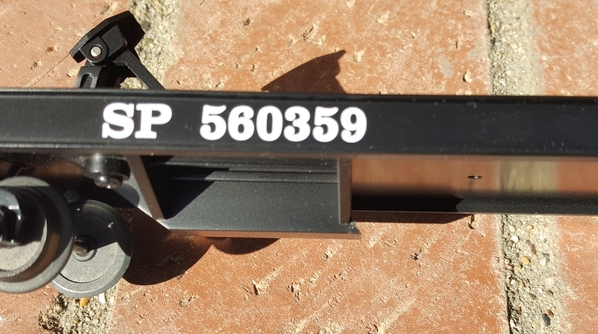
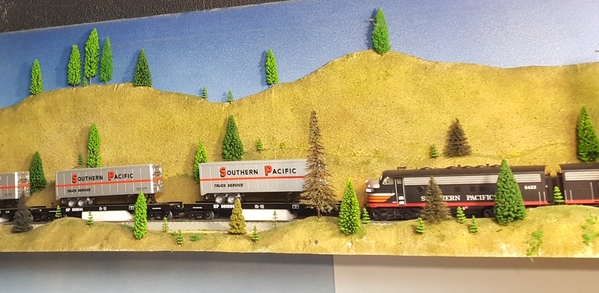
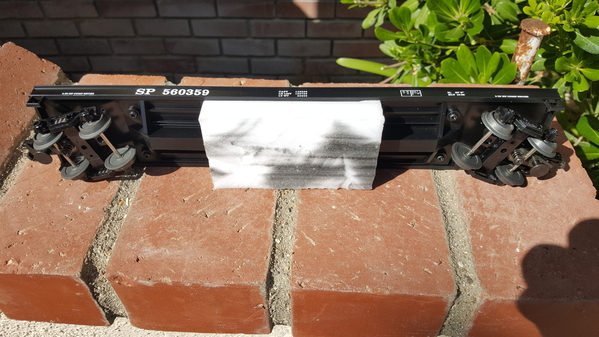

Attachments
I like Goo Gone especially for cleaning up sticky glues, but my wife can't stand the fumes. I love them...aromatic hydrocarbons. So if I use it I have to use it outside and throw away the cleaning paper in the trash container outside. A former boss I had once 50 years ago loved to smell MEK, Methyl Ethyl Ketone. He was a teetotaler but MEK was his one vice ![]()
Shasta: Are the cars weighted down?
My layout starts with balloon Loops at 44 in off the floor and is mostly a continuous grade up to 76 in off the floor another balloon Loop. I had one balloon Loop that was the town area that was o31 it has since been changed to o 48 but before I changed it I was able to push or pull the train everywhere on the lay out without any derailments
I'm surprised you don't have problems with Magic Erasers, being water based I'd expect them to promote rust pretty quickly!
@gunrunnerjohn posted:I'll say it to whoever will listen, Acetone is not something you want to have around if there's any chance of a spark.
I’ll 100% agree. I can show you two burn marks on the carpeting around our club layout that resulted from acetone catching fire on the track cleaning car pads when it sparked on a switch. The guys running the car both times managed to grab it off the layout, throw it on the floor and use a fire extinguisher to put it out. Way more excitement than a bunch of old guys need. 😳🔥🧯
We have an absolute rule now - no acetone for track cleaning.
Curt
I think we need a separate forum heading, just for track cleaning threads.
@RickO posted:I think we need a separate forum heading, just for track cleaning threads.
Or oil threads. Never thought I would see oil threads, a staple on car and motorcycle forums, on a train forum.
As for cleaning track, I use this. Much lower ignition point than acetone and safe for paint. In fact its used in the auto industry to clean wax and oil from paint prior to repainting. Shop around and you can find it for 18 bucks a gallon. Many other uses around the shop.
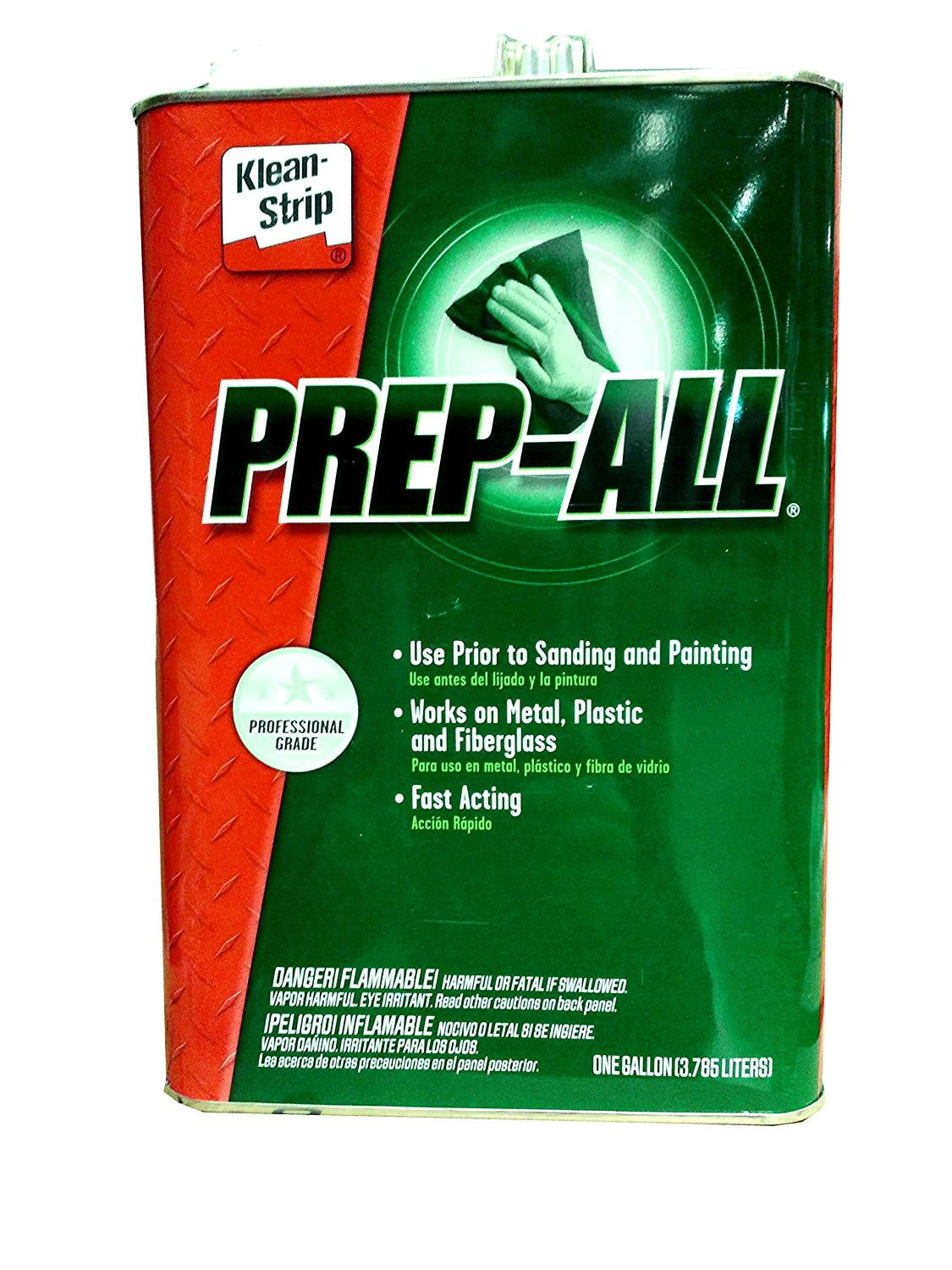
Sold at hardware and auto parts stores as well as online.
Pete
Most materials, especially solvents, should have access to a MSDS sheet. Material Safety Data Sheet.
Organic Cartridge respirator a good idea.
Klean Strip Prep All A (7 page) MSDS.
Not sure I'm that wild about that choice either Pete, but it appears better than Acetone. ![]() Looks like it's mostly naphtha (lighter fluid), another thing I'd be pretty cautious about around any sparks.
Looks like it's mostly naphtha (lighter fluid), another thing I'd be pretty cautious about around any sparks. ![]()









